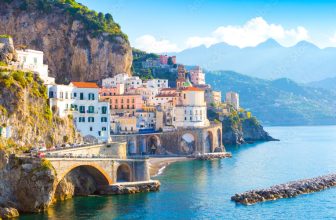
Ancient Roman cities were arranged in a grid pattern. These cities would appear as a sea of square blocks, with the streets made up of homes for the rich and poor, cafes and workshops, and theaters. Roman theaters were huge, open-air buildings with tiered rows of seats, and they were often surrounded by stone walls and fortified gateways. They would also have a wide variety of public buildings, including temples, statues, and other buildings.
Roman kings were elected from each of the city’s major tribes
The power of the monarch was delegated to two assemblies. The Comitia Curiata, a plebeian body, decided the laws, elected magistrates, and heard appeals for capital convictions. The consuls were elected from the people, and were drawn from the Senate. The Senate was dominated by patricians, descendants of Romulus. Plebeians, however, fought against the patricians and eventually won political power through a series of concessions. They also elected their own governing bodies, known as the tribunes. These bodies had the power to initiate or veto legislation.
The king of Rome had absolute power over the city and could not be prosecuted for his actions. In addition, he was the final word on disputes within the city. Legend has it that Rome was founded by the legendary twin brothers, Romulus and Remus. Both brothers fought constantly as joint leaders of Rome, until one of them was killed. The other twin, Gaius, died, and so did Rome.
The citizens of Rome were divided into several tribes. The first was the Latin Romans. The second was the Sabine tribe. The third was the Etruscans. The fourth tribe was the Dacians. These tribes had the largest population of all. During the fifth century, Rome had 17 rustic tribes. Rome expanded into 35 units between 387 and 241 bc.
The seventh king of the Roman Kingdom, Tarquin the Proud, was a harsh ruler who used intimidation and manipulation to retain his power. He constantly sought ways to gain more power. He granted himself authority to oversee legal cases without the Senate present and eroded the power of the Senate. The lower class, however, did not like the emperor and he did not rule in accordance with the laws of the Roman Republic.
Roman religion was based on Etruscan beliefs
The Etruscans were a civilization that placed a high importance on close relationship with the gods. They believed in the power of divination to gain knowledge, and they would seek the blessings of the gods before undertaking any task. Romans would eventually adopt these beliefs and incorporate them into their religion, which was largely based on Etruscan beliefs. However, some differences can be found in both the traditions.
Before the Romans invaded Italy, the Etruscans were the most common people in the area. They adopted Greek mythology and developed gods and goddesses from these cultures. The Etruscans followed the same religious rituals in founding cities, including the construction of temples and shrines. The Etruscans were particularly interested in the underworld, and their gods were involved in funiary games. Interestingly, the gladiator battle is said to have originated from these funiary games.
The Etruscan gods included 12 dii consentes, or advisors, who were often depicted on tombs. They also included 12 gods, including a chief god named Tin, who is similar to the Greek god Zeus. The gods were often associated with their consorts, including the goddess Uni and the wolf-like hare called Phersipna.
The Etruscan religious tradition was based on the religion of the Etruscans, and was considered by the Romans as the most religious of all. It was an art form that included ritual and divination, which meant that Roman priests and magistrates needed to understand etruscan language. Even after the Romans conquered Italy, the libri etrusci remained an important educational item. Translations of these books continued into the sixth century. However, their religion would become a subject for antiquarianism.
Roman amphitheaters were open air buildings with rows of tiered seats
The term “amphitheater” is used to describe an open air building with tiered seating. These were round in plan and typically had a central unroofed space surrounded by tiers of seats. The seating galleries were sloping semicircular structures. Sometimes the term refers to an open-air hollow in the rocks. During the Roman Empire, amphitheaters were used for theater and other shows.
Amphitheaters consisted of three separate parts: cavea (semicircular seating area) and ima (upper tier) galleries. The cavea contained the seats for the emperor and other high-ranking Romans, and was supported by arches carved into the rock. The cavea was divided into cunei, or wedge-shaped sections, which were separated by scalae. A vomitoria (a building that was used to disperse a large crowd) was built to separate the two tiers.
Roman amphitheaters were circular or oval in plan, with rows of tiered seating surrounding the central performance area. Ancient Greek theaters were similar, with tiered seating on one side of the stage. While the Colosseum is the best-known amphitheatre in the world, the term now refers to any open banked arena. This style of theater is reminiscent of outdoor summer concerts, where musicians perform for thousands of people.
Amphitheaters in ancient Rome were largely open-air structures with rows of tiered seats and were built on the same principles as the Coliseum, with the main difference being that there was no outermost corridor. The height of these structures was also limited to three stories. The Veronese amphitheatre, for example, is one of the best examples. It is notable that only four arches remain on the outer wall of the Veronese amphitheatre, which had 72 arches on the outer ring. The size of the seats is 166 1/2 feet around the entire building.
Roman gladiators were a bloodthirsty lot
The bloodlust of the gladiators was so intense that even women were condemned to fight in them. Female gladiators were common in the games and were not taken seriously in patriarchal Roman culture. The Emperor Domitian, for example, was known to have pitted women against dwarves. A famous marble relief shows two women fighting and it depicts an honorable draw.
The bestiarii were specially trained to fight wild animals. This meant that they were usually criminals, but there were exceptions, such as Carpophorus, who killed twenty animals in one day. This was an incredible feat, and many people believed that he was the reincarnation of Hercules! One such gladiator was a man called Carpophorus, who fought lions, bears, tigers, and leopards and even a rhino.
The gladiators were divided into two classes: freemen and slaves. They were assigned a class based on their physical stature. Stronger men were made dimachaerus, which meant they had two swords. The majority of freemen, however, were thraeces and murmillones, which meant they fought with simple swords and shields. The unluckiest were referred to as retiarius. The retiarius had a trident and a net to fight with, and they were expected to die in the arena.
In the early days, gladiators were slaves or prisoners of war, but they were not always slaves. Initially, they were slaves, but as the centuries progressed, free men began to sign contracts with gladiator schools. They were mostly desperate men, ex-soldiers, or nobles. Many gladiators had no other purpose but to fight and be famous.
Rome is home to Europe’s largest film studio
Rome is the capital of Italy and has a rich motion picture heritage. In the early 20th century, the Cinecitta Studios, Italy’s largest film production facility, were established. The city was also the adopted home of Federico Fellini. Today, Rome has an extensive film industry sector and is home to a prestigious annual film festival. Moreover, local government has worked with private investors to support and promote the film sector.
The film “Eat, Pray, Love” was shot in this city’s public park, which is renowned for its towering aquaduct. Another famous film set is the Sant’Agnese Church, which is home to one of the city’s most beautiful archaeological sites. Visiting the Aquaduct Park is a great way to relax with a picnic and explore the city’s history.
The Barrandov Studios has 13 cutting-edge soundstages and an adjoining 39-acre backlot. In addition, the Prague Studios is home to four cutting-edge soundstages and a five-acre greenbox. This studio has hosted big-budget Hollywood action films and has a long track record. In addition to its film industry, Rome has a vibrant art scene. The city also hosts world-famous exhibitions and festivals.






